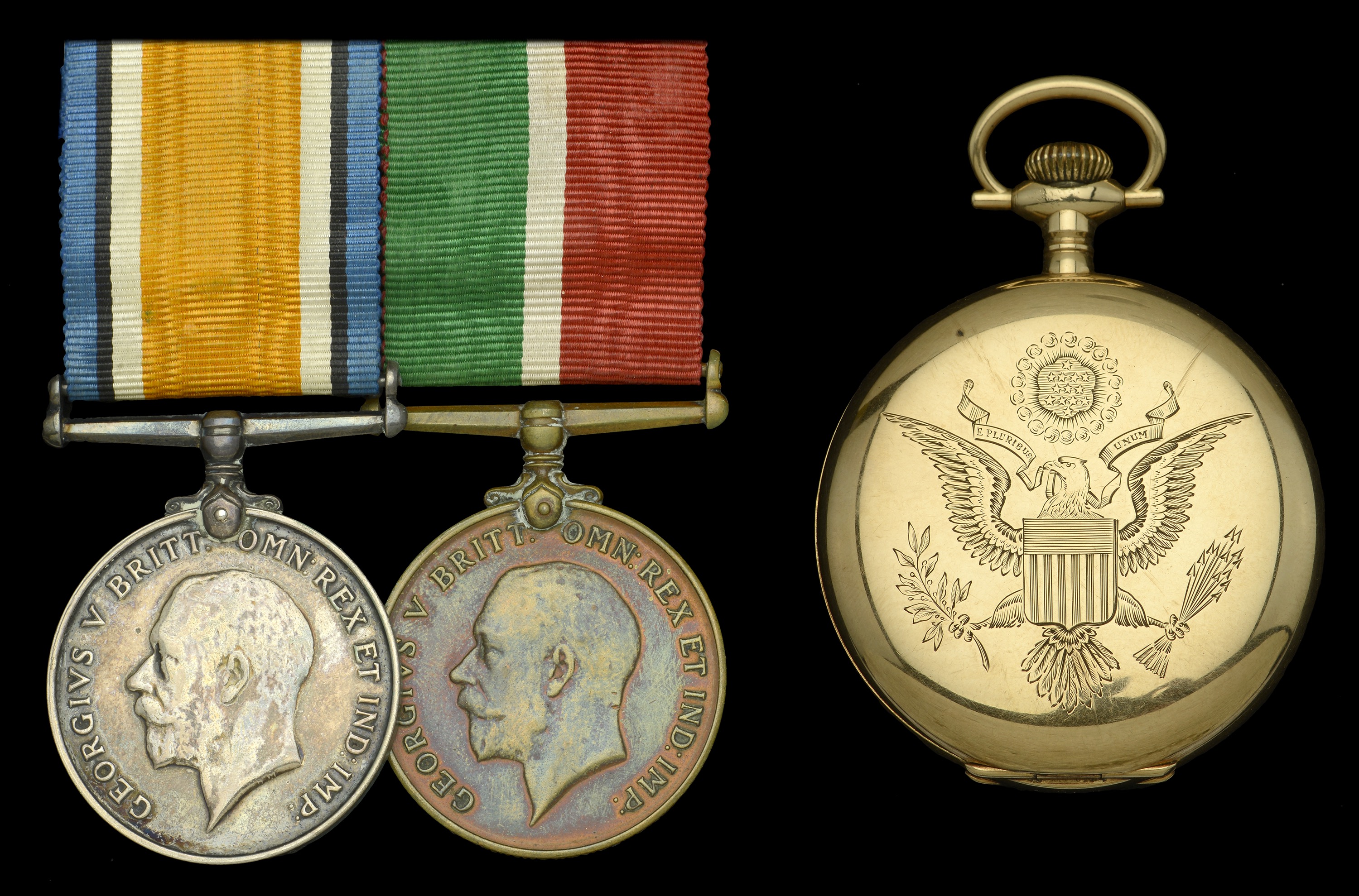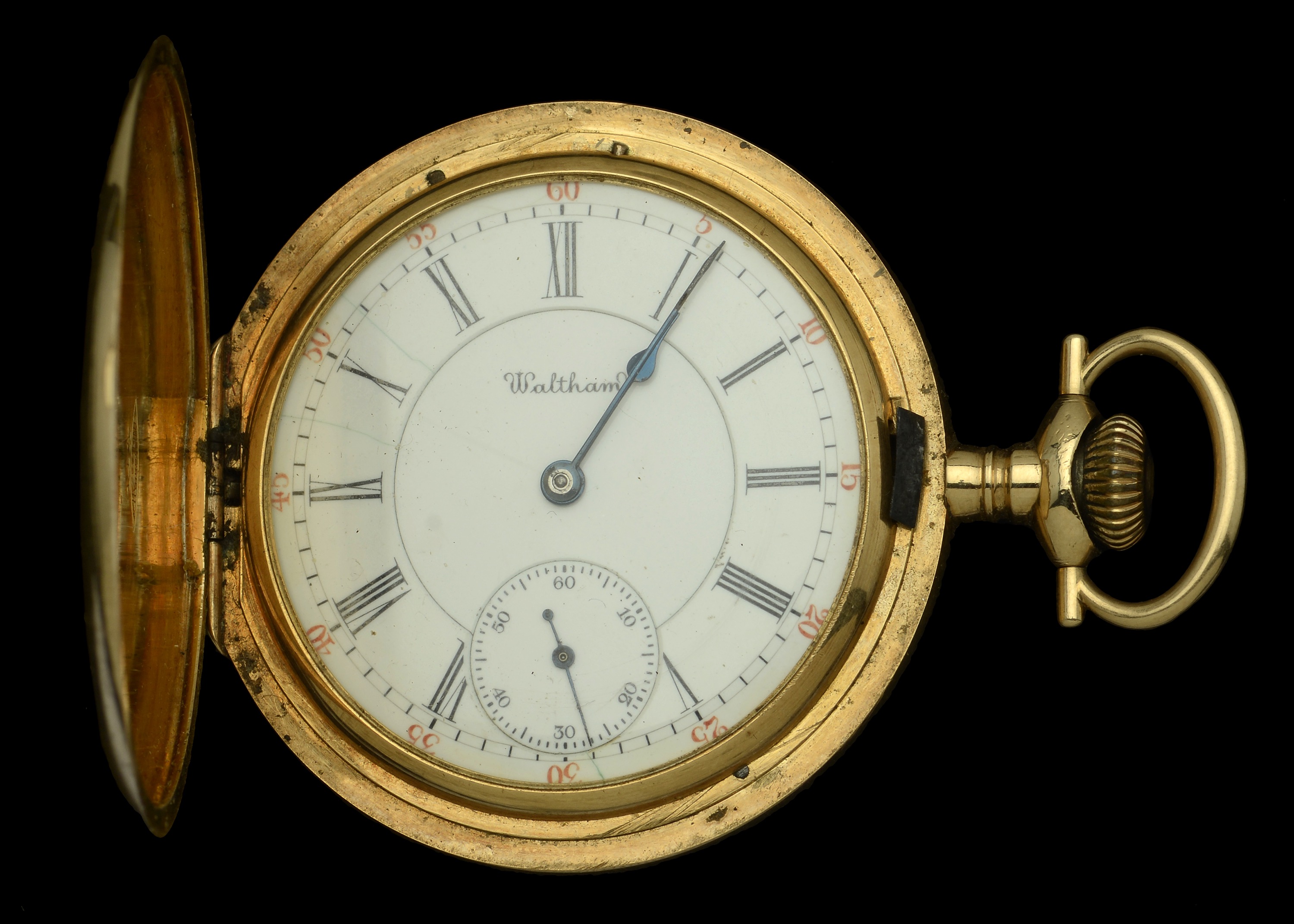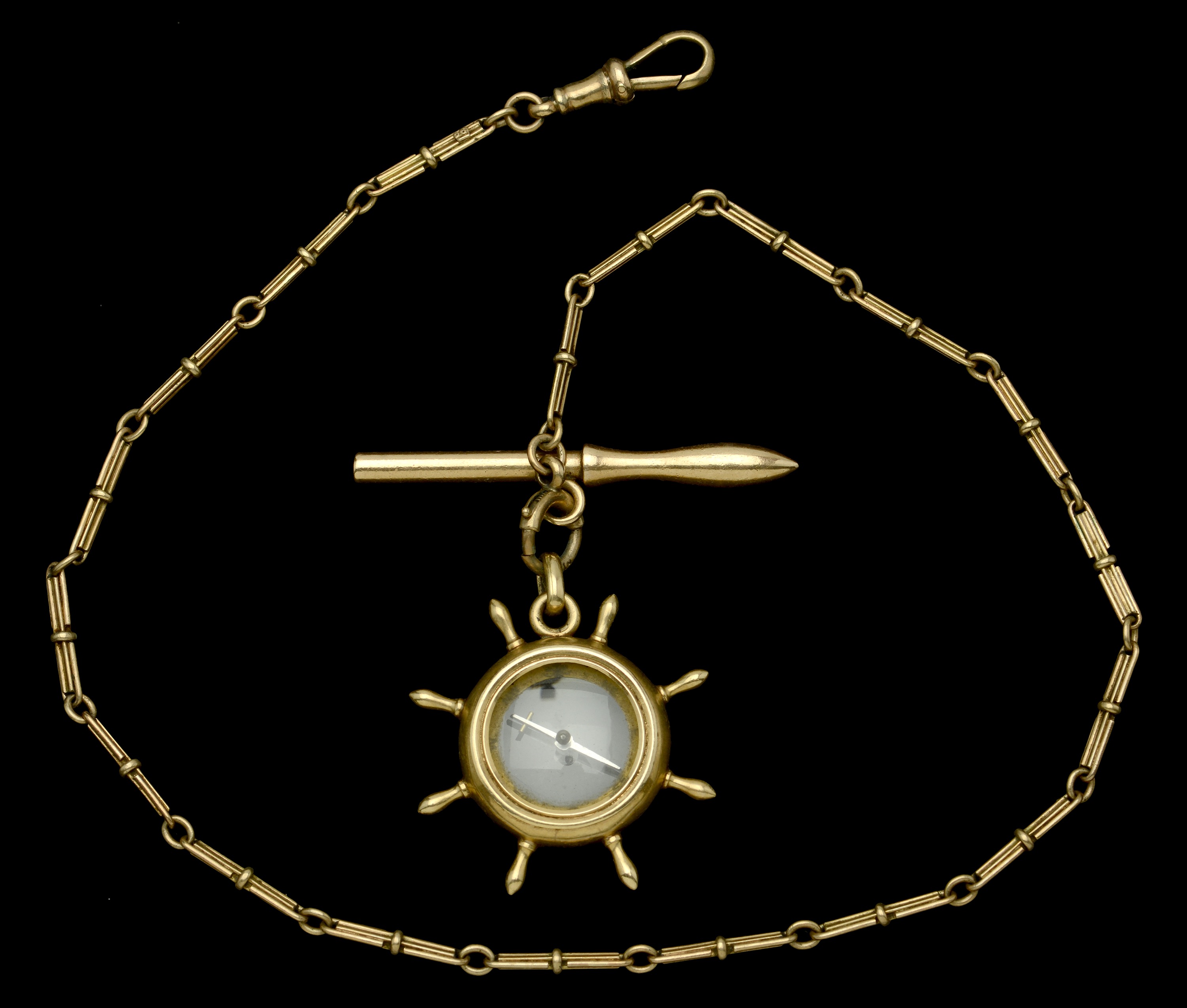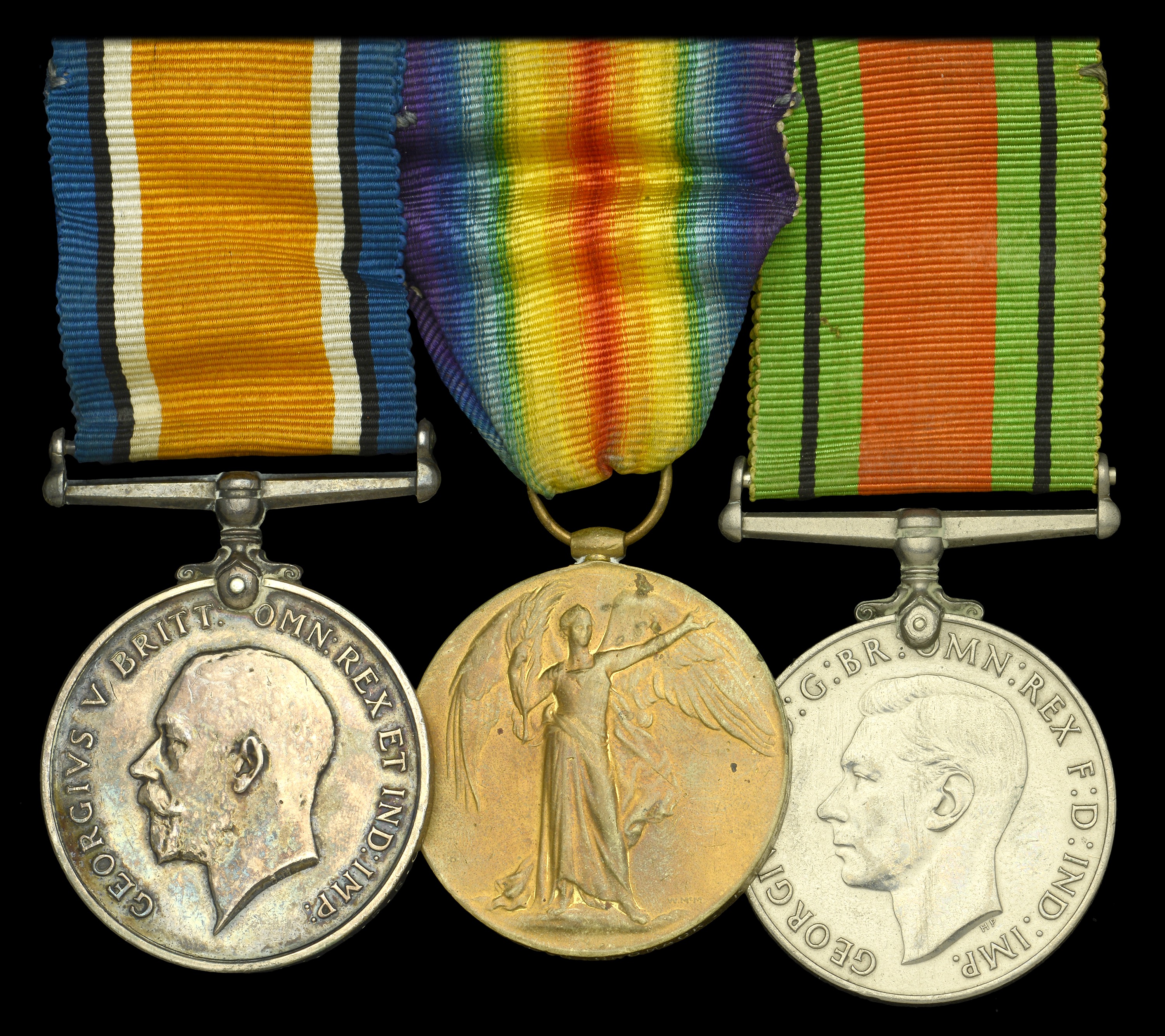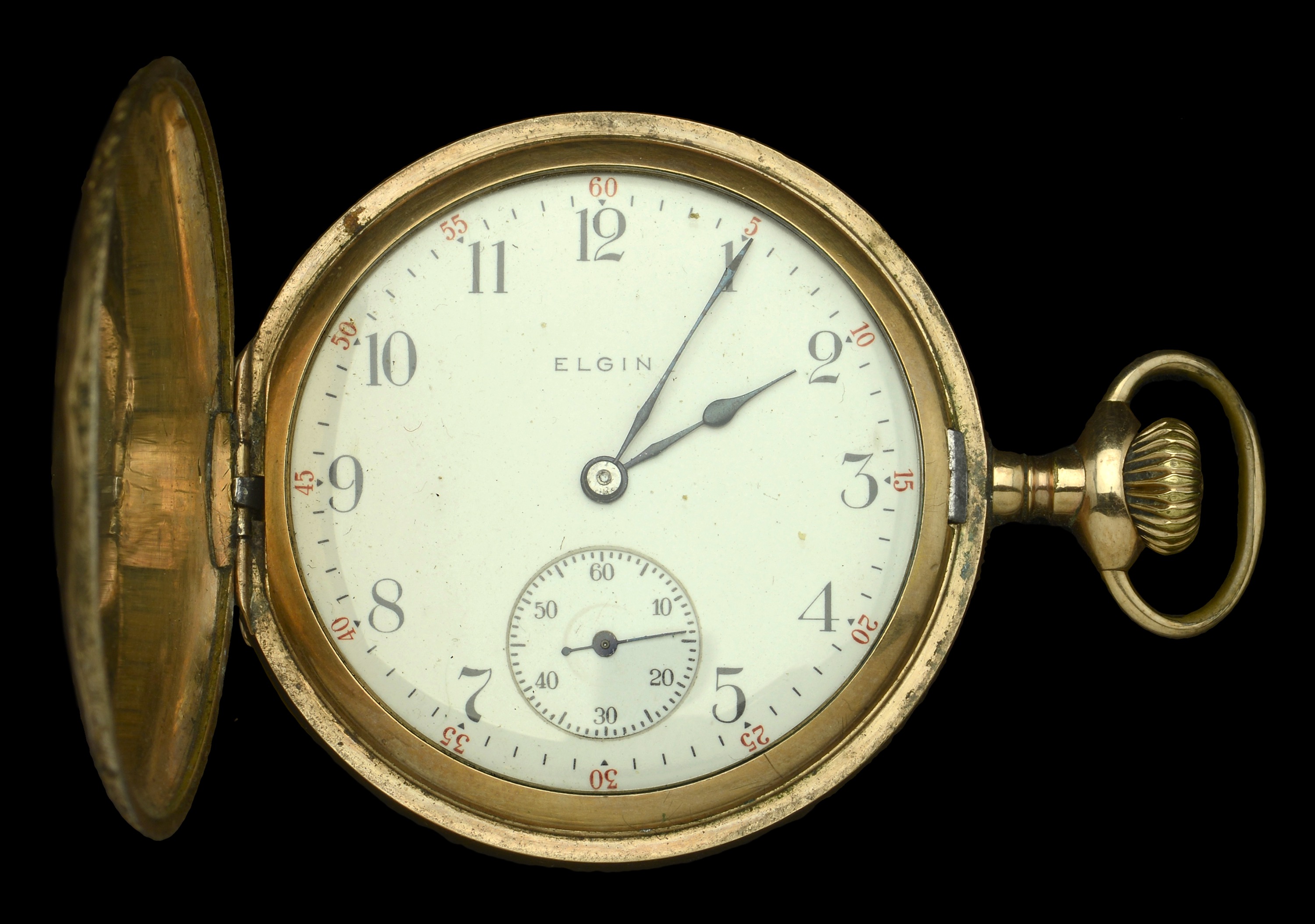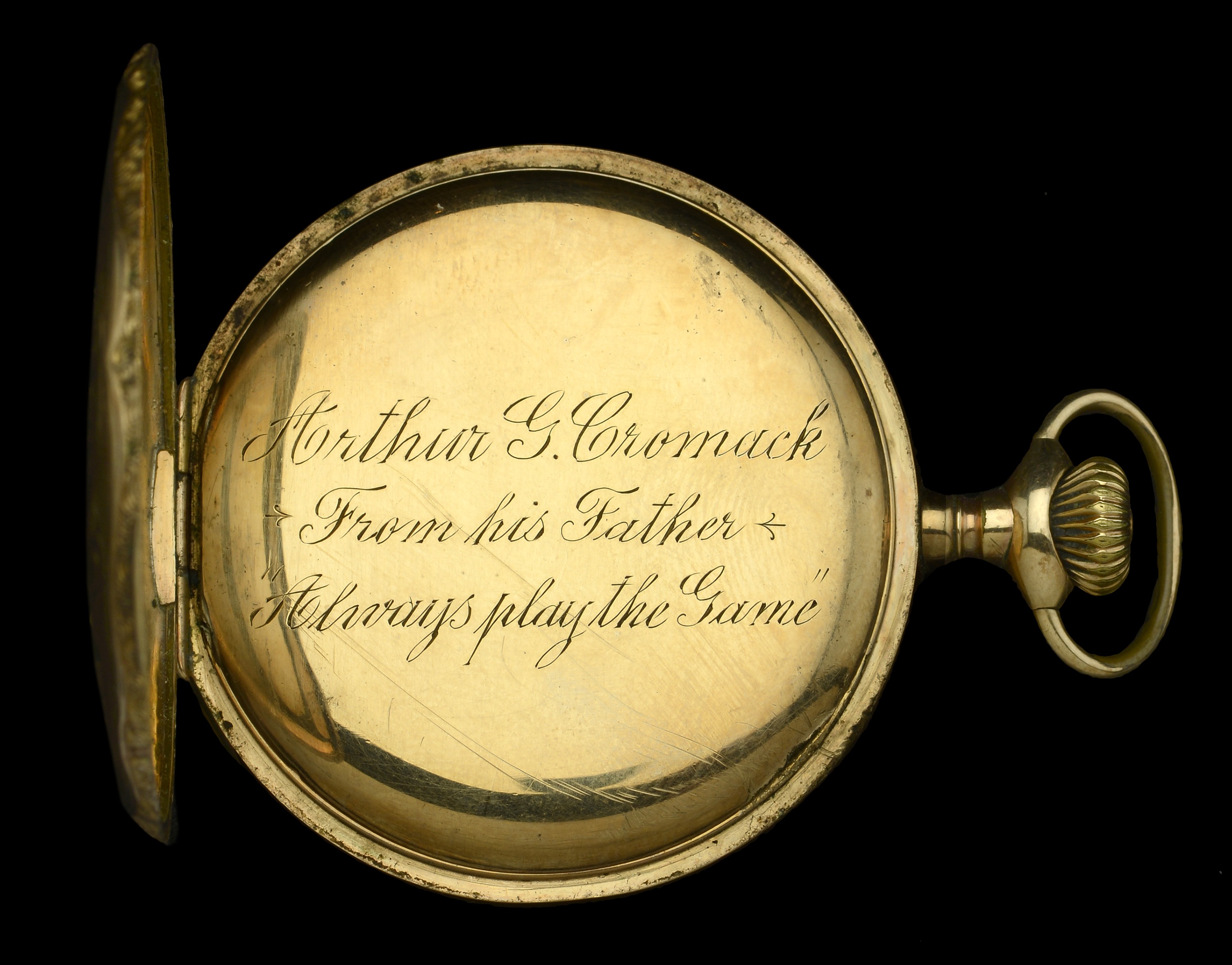The poignant Great War campaign pair and U.S. Presidential Gold Watch for Lifesaving group awarded Captain A. G. Cromack, Mercantile Marine, for the rescue of the crew of the American schooner Maria O. Teel in January 1915; the very same watch that was recovered from his body in the North Sea after his command the S.S. Rio Colorado was mined and sunk in March 1917 British War and Mercantile Marine War Medals (Arthur G. Cromack), together with U.S. Presidential Gold Hunter Cased Watch for Saving Life at Sea, American Watch Co., Waltham Mass., No. 16177574, 14 carat, the front lid engraved with the Seal of the President of the United States of America, the inside back lid with presentation inscription ‘From the President of the United States [Woodrow Wilson] to Arthur G. Cromach (sic), Master of the British steamship Rio Colorado in recognition of his humane services in effecting the rescue at sea, on January 14, 1915, of the master and crew of the American schooner Maria O. Teel’, with 14 carat chain and attached fob compass in the form of a ship’s wheel, contained in its original Edwards & Zanner Co, Jewelers, Washington D.C., wooden presentation case, the medals a little polished but generally very fine, the watch apparently in good working order (3) £6,000-£8,000 --- Importation Duty This lot is subject to importation duty of 5% on the hammer price unless exported outside the UK --- --- Some 294 watches were presented in the period 1880-1939, in gold and in silver; an example of an 1863 watch (18 carat) sold at Sotheby’s in New York in June 1994 for $26,450 (estimate $10,000-15,000). Arthur Garbutt Cromack was born in Darwen, Lancashire on 25 January 1872 and first went to sea as an apprentice in February 1888, aged 16. He subsequently qualified for his 1st Mate’s certificate in February 1895. Of subsequent events in January 1915, when, as captain of the S.S. Rio Colorado, he effected the rescue of the crew of the American brig Maria O. Teel, official correspondence states: ‘In the extract giving particulars of 14 January 1915, you will note that the American schooner Maria O. Teel of Boston was sighted with distress signals, and that after the captain [Cromack] of the S.S. Rio Colorado had noticed the schooner, notwithstanding the tempestuous weather prevailing, he ordered the steamer to proceed as close as possible to the unfortunate American schooner, whereupon it was noticed that the schooner put up signals to the following effect: “Stand by” – “I am a complete wreck” - “Do not abandon me.” The captain of the steamer hailed the schooner and asked whether the crew desired to be taken off, and they replied that they did. Notwithstanding the exceptional high and tempestuous seas prevailing, the boat was lowered from the steamer, with the Second Officer and four seamen in it, and after considerable difficulty and danger, the entire crew, including the Master and nine men, were taken off the schooner. The sea was so high and tempestuous that it was impossible for the lifeboat to lay alongside the schooner, and the crew jumped overboard and was picked up by the various men in the lifeboat of the S.S. Rio Colorado. All this happened between 1.50 p.m. and 5.00 p.m. on 14 January 1915, at which latter time the crew of the schooner was placed safely on board the Rio Colorado and landed at her next port of call.’ According to one newspaper report, the Master of the American schooner was not the most welcome of guests, for he was ‘a very rough and ignorant man’ who had a tendency to ‘grow violent.’ Tragically, Cromack was killed on 22 March 1917, when the Rio Colorado struck a mine in the North Sea. A related newspaper report states: ‘The evidence showed that an explosion occurred which caused the vessel to sink. Eight lives were lost. The captain was last seen in the water wearing a lifebelt. When the body was found there was in the pockets a gold watch, presented by the President of the United States for having saved the crew of an American ship. A verdict was returned of “Found drowned in the North Sea, death being due to an explosion, probably caused by a mine.” ’ Aged 45, Cromack left a widow, Florence, of Prospect Street, Scarborough, in which town he was buried in the Manor Road Cemetery. Sold with the Great War pair and Defence Medal awarded to his son, Arthur G. Cromack of the King’s Royal Rifle Corps, together with a rolled gold hunter cased watch, inscribed ‘Arthur G. Cromack, from his Father, Always Play the Game’; and various original news clippings and copies of Department of State correspondence concerning the award of his ‘gold watch with chain and charm’.


















